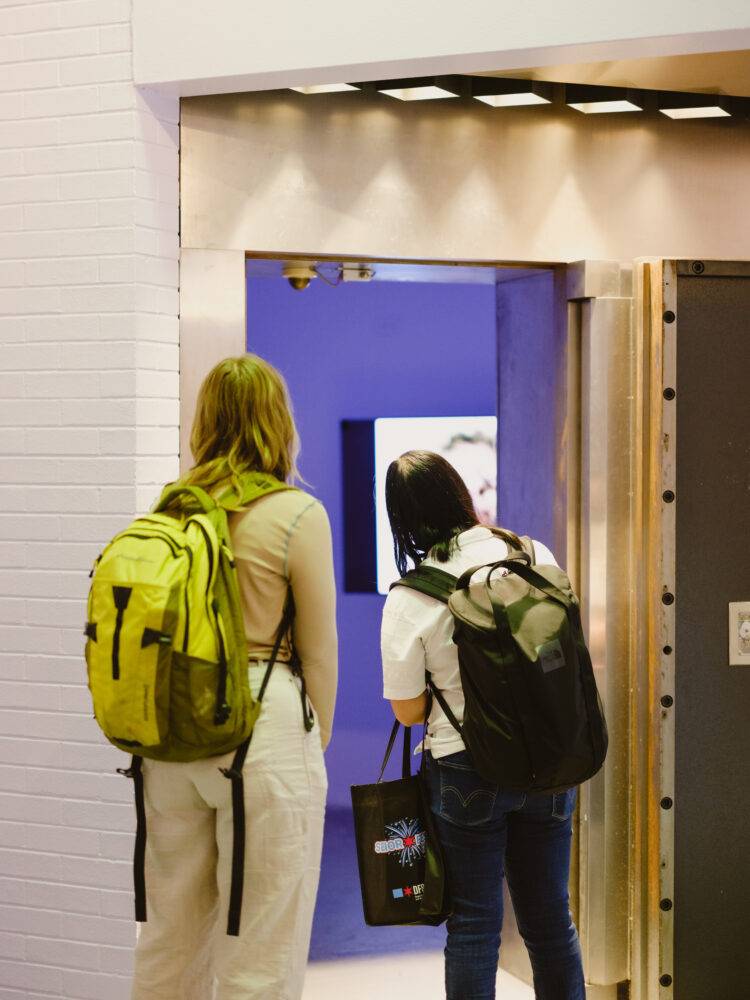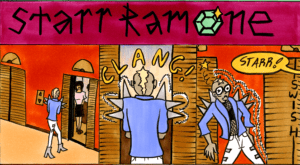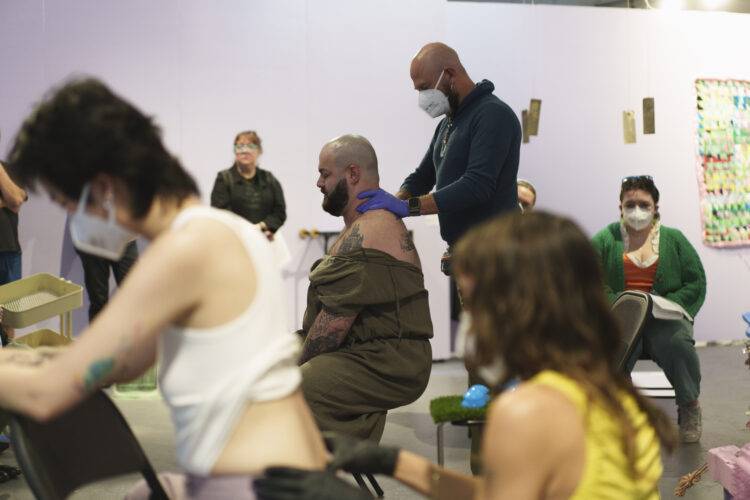
To many, the white box art gallery world is seen as a prestigious environment meant only for certain viewers and certain artists. Factor in, according to the Centers for Disease Control and Prevention, one in four people in the United States alone have a disability which may limit them from these spaces even further — and the art scene doesn’t feel diverse and welcoming at all.
The Voices Embodied Project is an ongoing series of exhibitions that aims to create a broader discussion about disability through art making. It was founded and curated by Alex Stark (BFA 2016), an alumnus of the School of the Art Institute of Chicago, who is now an advisor and event planner in SAIC’s Disability and Learning Resource Center.
“I’m a queer disabled person, and that’s the way I approach creating our projects. This has been an ongoing project that has been personally important to me,” Stark said.
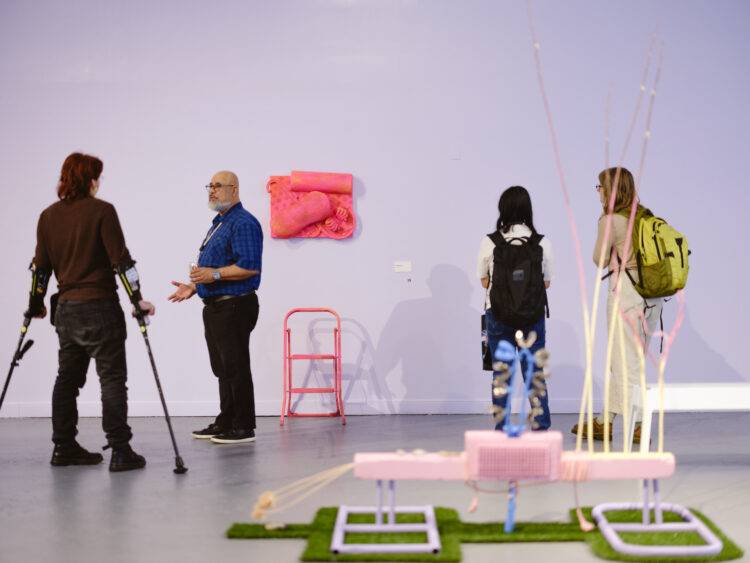
This October, the Voices Embodied Project returned for its fifth iteration. Stark, in collaboration with SAIC’s Wellness Center, brought a new exhibition titled “Reverberations” to the Design Museum of Chicago that ran in October 2024.
“Voices Embodied: Reverberations” showcases work from 18 national and international artists with disabilities. The artists’ work reimagines the importance of inclusivity and awareness through diverse perspectives. The show is interactive, with multiple ways to engage with the work.
By the entrance of the exhibition, iPads, QR codes, and paper packets build a resource library that allows for guests to digitally flip through the featured artwork, find audio descriptions for pieces, written explanations from the artists, and books on art and disability to read through. The exhibition itself looked whimsical and playful. The walls were painted a light lavender, and the pieces from the artists were saturated with color and various textures.
The director of the DLRC at SAIC, Valerie St. Germain, sees the project as an appealing and successful way to spread awareness.
“What’s important to me — and what I think is really needed not only at our school, but really everywhere — is more of an informed awareness of disability and what it is. And, I think it’s terribly misunderstood most of the time,” St. Germain said.
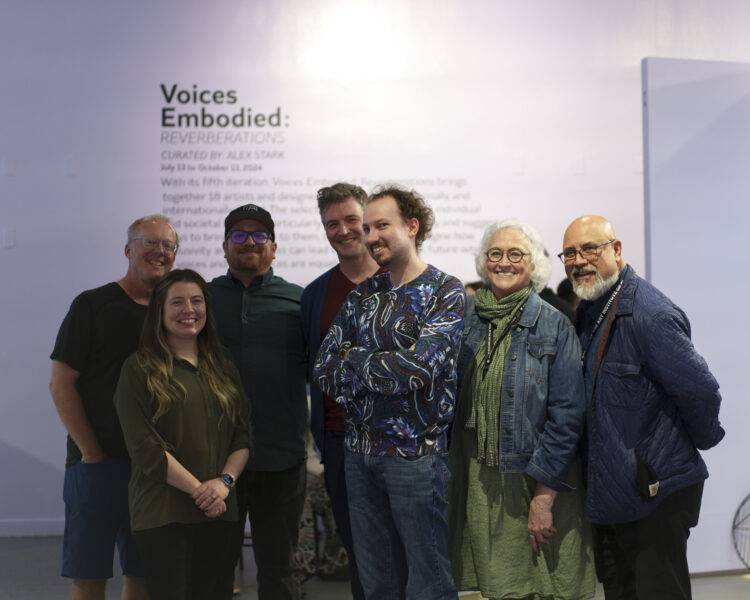
Over its stay in the Design Museum from July to October, the exhibition has seen an estimate of 15,000 visitors, many of which were students, and an increased number of exhibition tours.
“It’s a non-threatening, welcoming kind of show,” St. Germain said.
When looking at the overall reception from the public, Stark and St. Germain said that many viewers expressed that the experiences reflected in the various pieces felt relatable and allowed them to see different perspectives.

Gabriel Chalfin-Piney, artist and performer in the “Reverberations” exhibition, performed their piece “Corpus: Medical Debt” at the closing reception of the show on Oct. 11. Investigating medical trauma, chronic pain, and chronic illness, Piney wanted to bring a new perspective to the idea of performance. In “Corpus: Medical Debt,” viewers watch as Piney and another performers receive messages from two of Piney’s medical practitioners.
“Something I always think about in theater is that it’s usually for the audience, right? I started getting burnt out doing that, and I realized that I actually wanted the performance to feed me and feed the other performers,” Piney said.
Piney stressed the importance of community and making connections; “It takes like a community, and it takes many people to put your body back together in a lot of ways. And this show has been really special.”

While changing how we look at art and disability, the “Voices Embodied: Reverberations” exhibition also challenges the accessibility of space itself.
“[The show] pushed the Design Museum to be more accessible in some really direct ways,” said Tanner Woodford, founder and executive director of the Design Museum.
While putting together the show, Woodford and his colleagues noticed many things within the gallery space that weren’t accessible. A hole in the accessibility ramp was found, swiftly repaired, and new, brighter lighting was installed, and the exhibition descriptions used the largest text the museum has ever used.
Woodford said looking at the space “was a way of me seeing my own biases. We’ll continue to have a more accessible space because of Voices Embodied and that’s probably my greatest joy — seeing this place being more accessible.”
